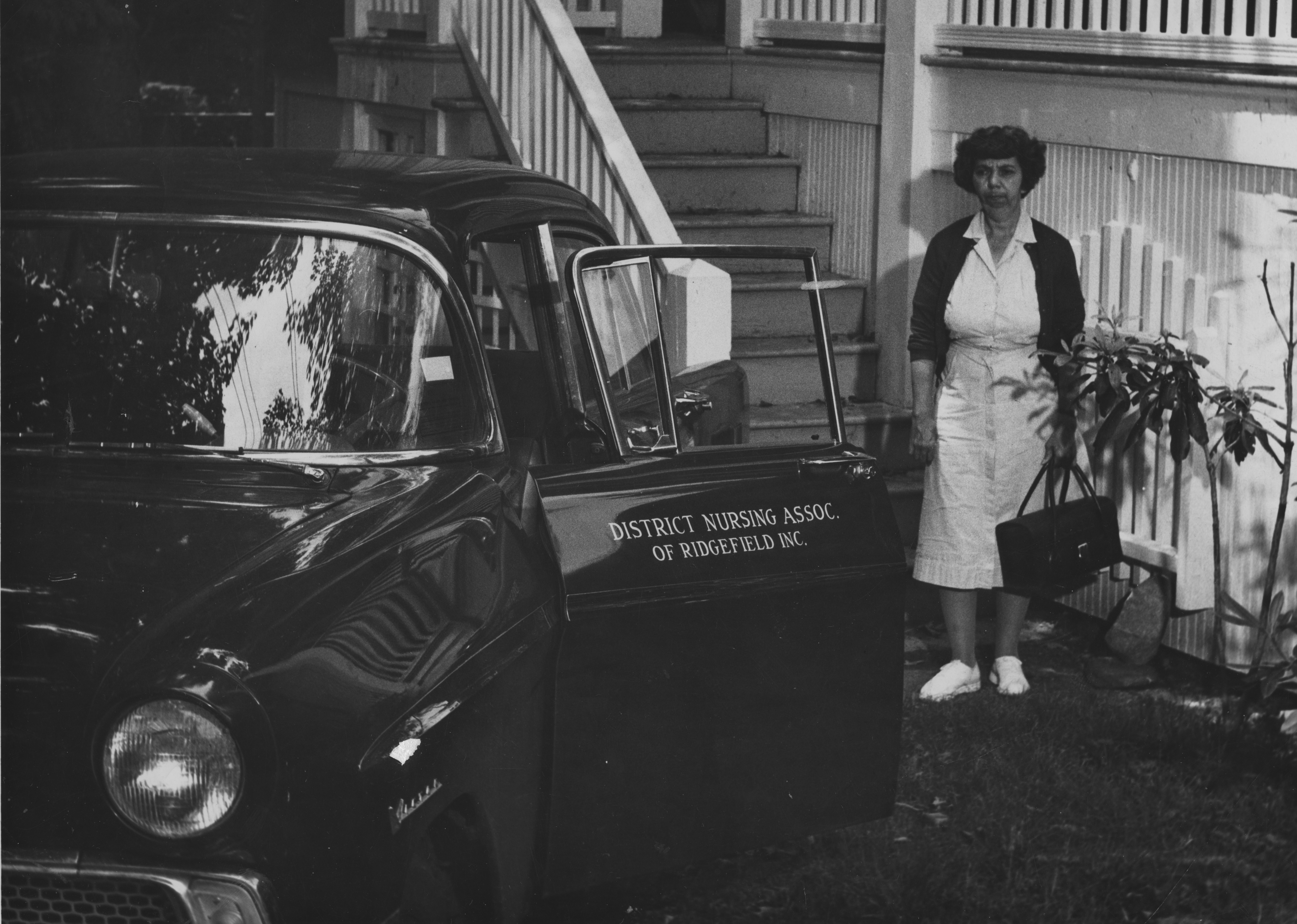

Above: Irene Holt, one of RVNAhealth’s earliest visiting nurses, with the agency’s first automobile.
In 2019, RVNAhealth celebrated a
number of milestone work anniversaries – including 20 years for our President
& CEO Theresa Santoro (whose first role here was as a per diem RN in 1999)!
A lot has changed in the homecare space since 1999. As Theresa noted,
“When I think back to when I joined our agency as a nurse 20 years ago,
technology as we know it today was nonexistent. I recall carrying around what
was basically a paper rack of patient records- no electronic medical record!”
Here is some perspective from across all our different service areas.
Isabel Ambrose, CNA, Certified Nursing Assistant (and 26-year veteran of RVNAhealth)


There have been so many changes, but one basic one is the convenience of GPS navigation apps (like Waze and Google Maps). Even seven to ten years ago, we had to look at a printed map before seeing a patient, and even then we would still call them to confirm their location and ask for landmarks. You might be looking for, “the house with the bird on the mailbox.”
Of course, 20
years ago, our agency didn’t serve 35+ towns, like we do today. So, it was
easier to get a decent lay of the land!
John Apinis, RN, BSN, Director of Nursing Practice


Homecare has evolved so much in just the past 10 years. It used to be about maintenance. But with the focus on getting people out of the hospital as soon as possible, the care we deliver now is more complex, and the cases are more acute.
In another ten
years, we’ll see changes in population health, insurance, and hospital stays
(the latter will be even shorter than today).
How and where
we care for patients won’t look anything like it does today.
Keri Linardi, RN, Chief Clinical Officer


Looking back 20 years, hospice was still a relatively new Medicare benefit — and it was geared primarily toward cancer patients. Over the years there’s been a positive transition and recognition that hospice isn’t just about cancer; patients with other life-limiting conditions, and their families, benefit from hospice.
Also, we’re
bringing hospice in earlier in the trajectory of illness, recognizing that
hospice care improves quality of life and keeps patients out of the hospital
and at home (or wherever they call “home”).
When people are
asked where they would like to die, the majority say, “at home.” For the first
time we’re seeing a trend with more people dying at home than in intensive care
units. It gives hope that people are starting to understand that hospice isn’t
just about dying. It’s about all the living that you and your loved ones can
have when you have a life-limiting condition. That’s what the hospice program
is for.
Theresa Santoro, MSN, RN, CHCA, President & CEO


As nurses, we needed to use pen and paper to record our assessments and document communication between patients and doctors. So, each day, we lugged around records for six or seven patients – in addition to a nurse’s bag loaded with clinical devices!
With the advent
of electronic medical records and mobile devices, clinicians can document and
transmit their assessments, notes and communication with coworkers and
physicians in real time. Vital signs, critical assessments and medication
updates can be communicated quickly, allowing for earlier interventions and
responses than ever before.
We were also
regularly on the phone, leaving messages for physicians on important patient
information. Today, from our laptops, we scan and email information that’s
securely encrypted, for faster reporting and to prevent hospital readmissions
or emergency room visits.
From a
technology perspective, we’ve made great strides forward. We’re communicating
in real time and sensitive patient health information is protected. The
clinicians, I’m sure, also appreciate travelling lighter!
Gigi Weiss, MSPT, Director of Rehabilitation Services


Surgical technology is so much less traumatic and invasive, and we are seeing patients so much earlier following surgery. Patients used to spend a week in the hospital, and a month in a rehab facility. Now, with joint replacement surgery, many patients go home the same day.
Therapists deliver the care in home that we once did in acute care settings. Therapists are more medically trained and attuned to any sort of change in the patient’s condition. Technology lets us be more in touch and in immediate communication with all medical professionals. We are moving toward a “hospital at home” model.
Hospitals will be the ICU, with the home as the stepdown unit. Patients recover better in their homes, with less chance of exposure and infections. One day, patients’ homes will be set up with portable equipment, just like in a hospital room. Home health agencies will be essential partners in delivering this care.



